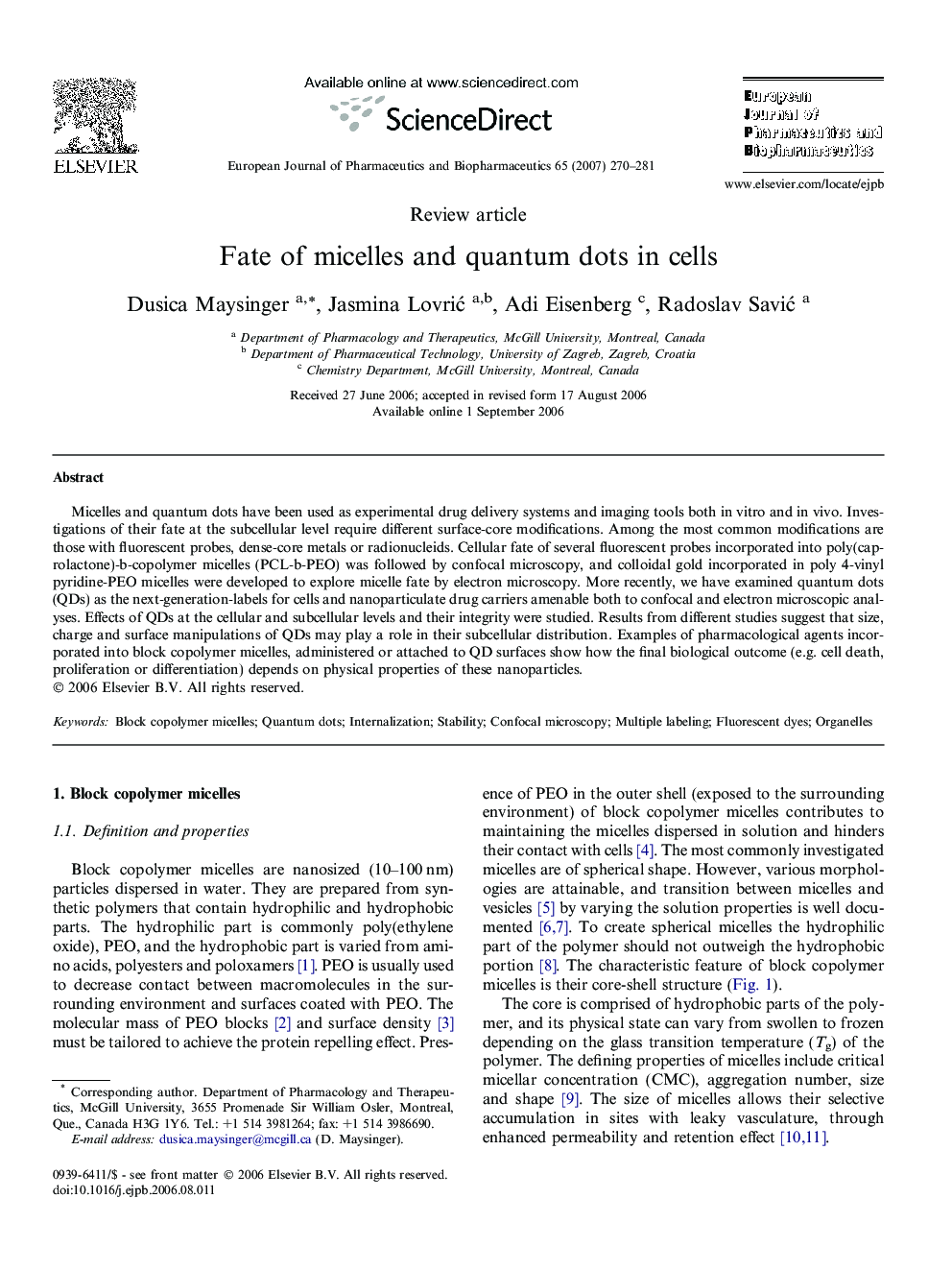| کد مقاله | کد نشریه | سال انتشار | مقاله انگلیسی | نسخه تمام متن |
|---|---|---|---|---|
| 2085183 | 1545407 | 2007 | 12 صفحه PDF | دانلود رایگان |

Micelles and quantum dots have been used as experimental drug delivery systems and imaging tools both in vitro and in vivo. Investigations of their fate at the subcellular level require different surface-core modifications. Among the most common modifications are those with fluorescent probes, dense-core metals or radionucleids. Cellular fate of several fluorescent probes incorporated into poly(caprolactone)-b-copolymer micelles (PCL-b-PEO) was followed by confocal microscopy, and colloidal gold incorporated in poly 4-vinyl pyridine-PEO micelles were developed to explore micelle fate by electron microscopy. More recently, we have examined quantum dots (QDs) as the next-generation-labels for cells and nanoparticulate drug carriers amenable both to confocal and electron microscopic analyses. Effects of QDs at the cellular and subcellular levels and their integrity were studied. Results from different studies suggest that size, charge and surface manipulations of QDs may play a role in their subcellular distribution. Examples of pharmacological agents incorporated into block copolymer micelles, administered or attached to QD surfaces show how the final biological outcome (e.g. cell death, proliferation or differentiation) depends on physical properties of these nanoparticles.
Journal: European Journal of Pharmaceutics and Biopharmaceutics - Volume 65, Issue 3, March 2007, Pages 270–281